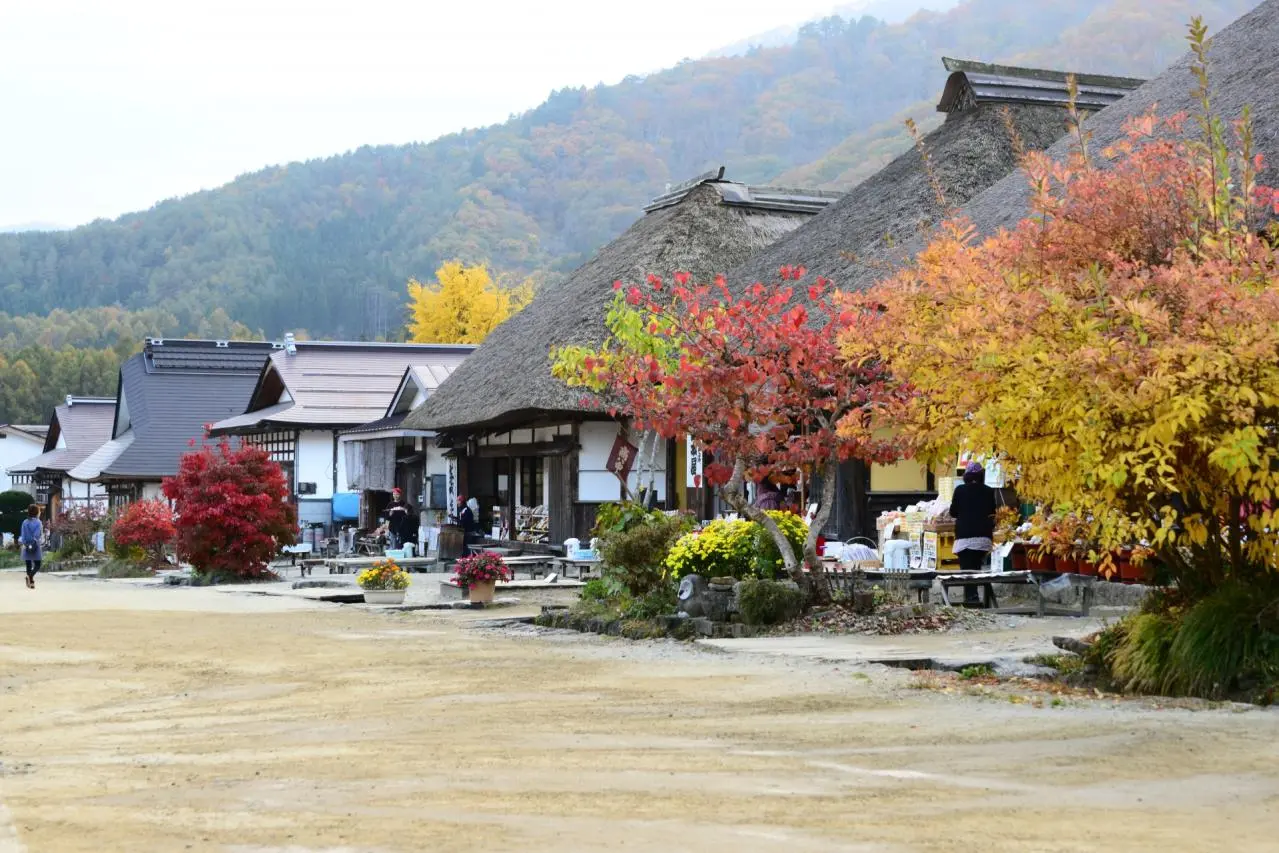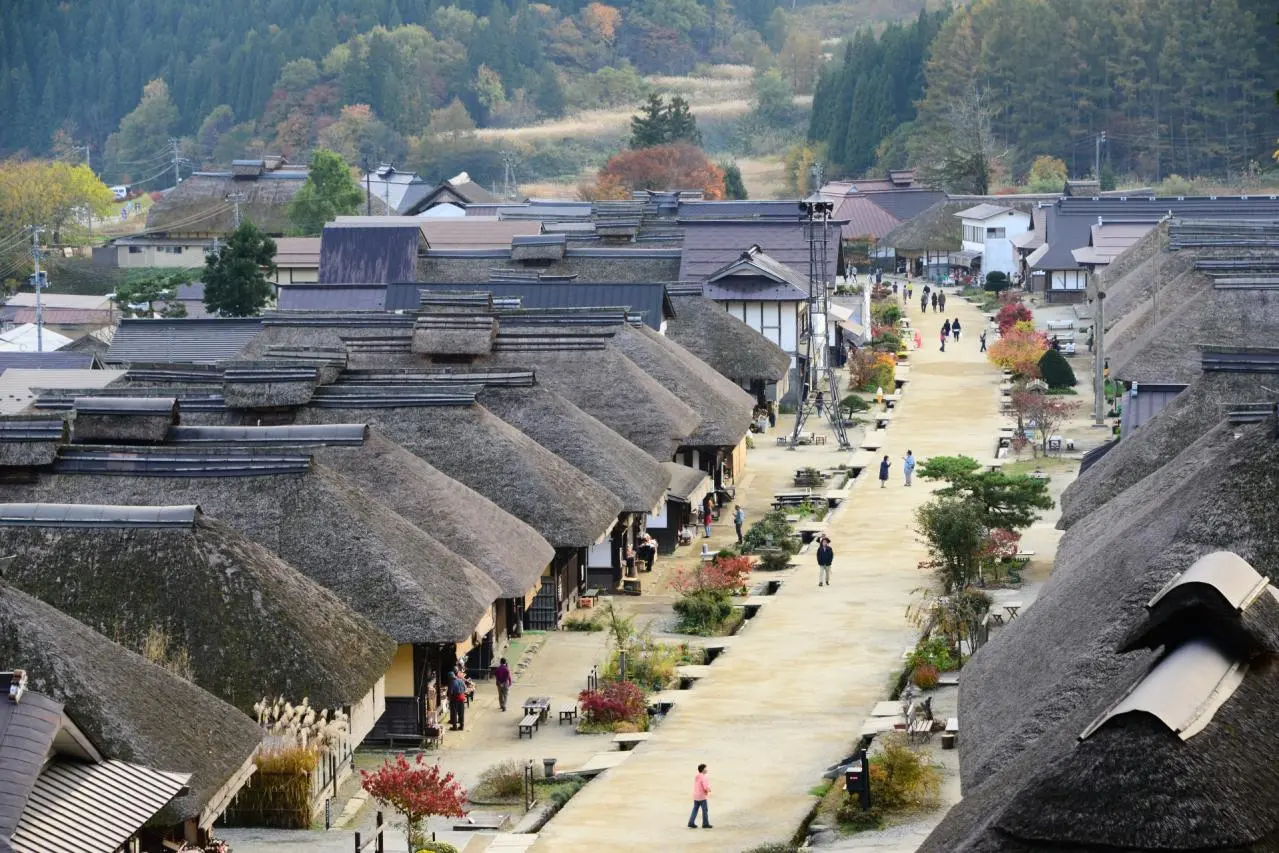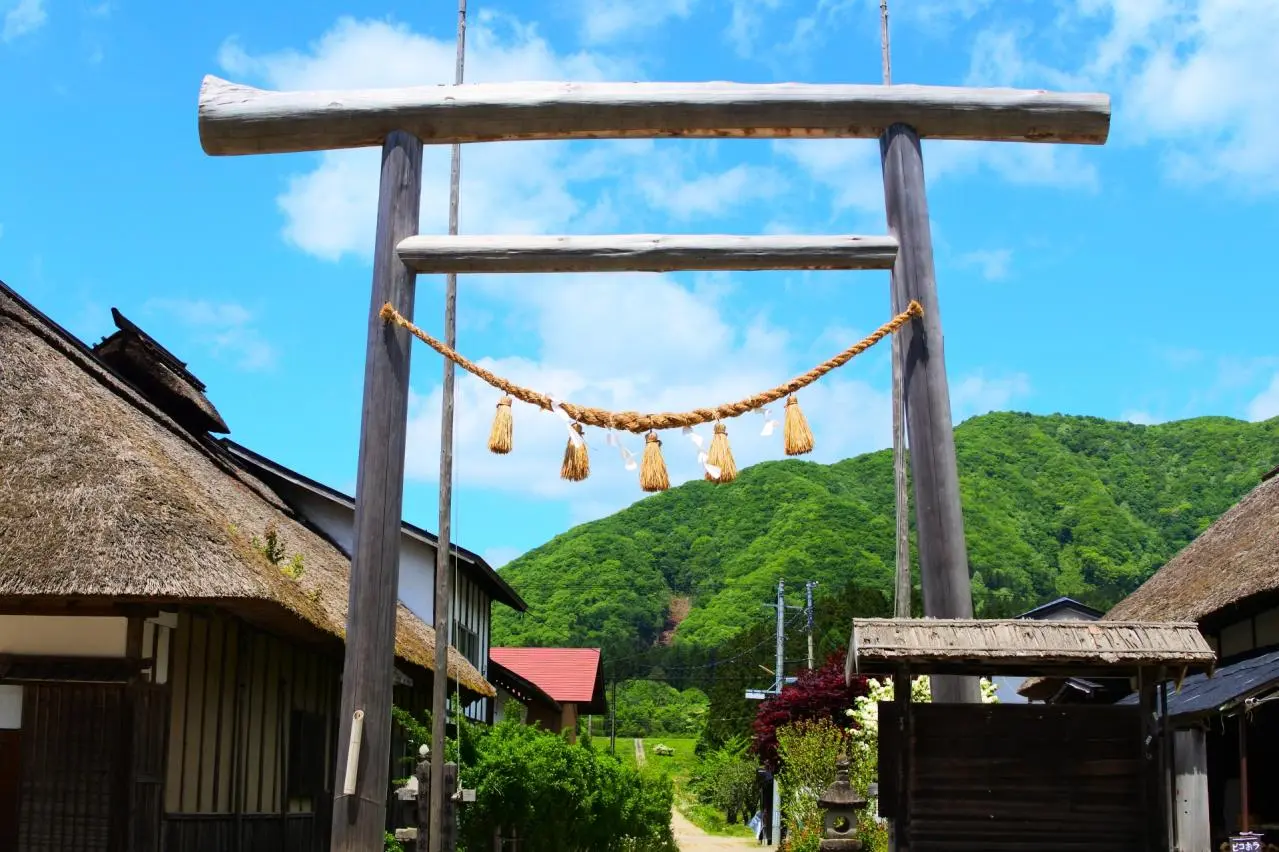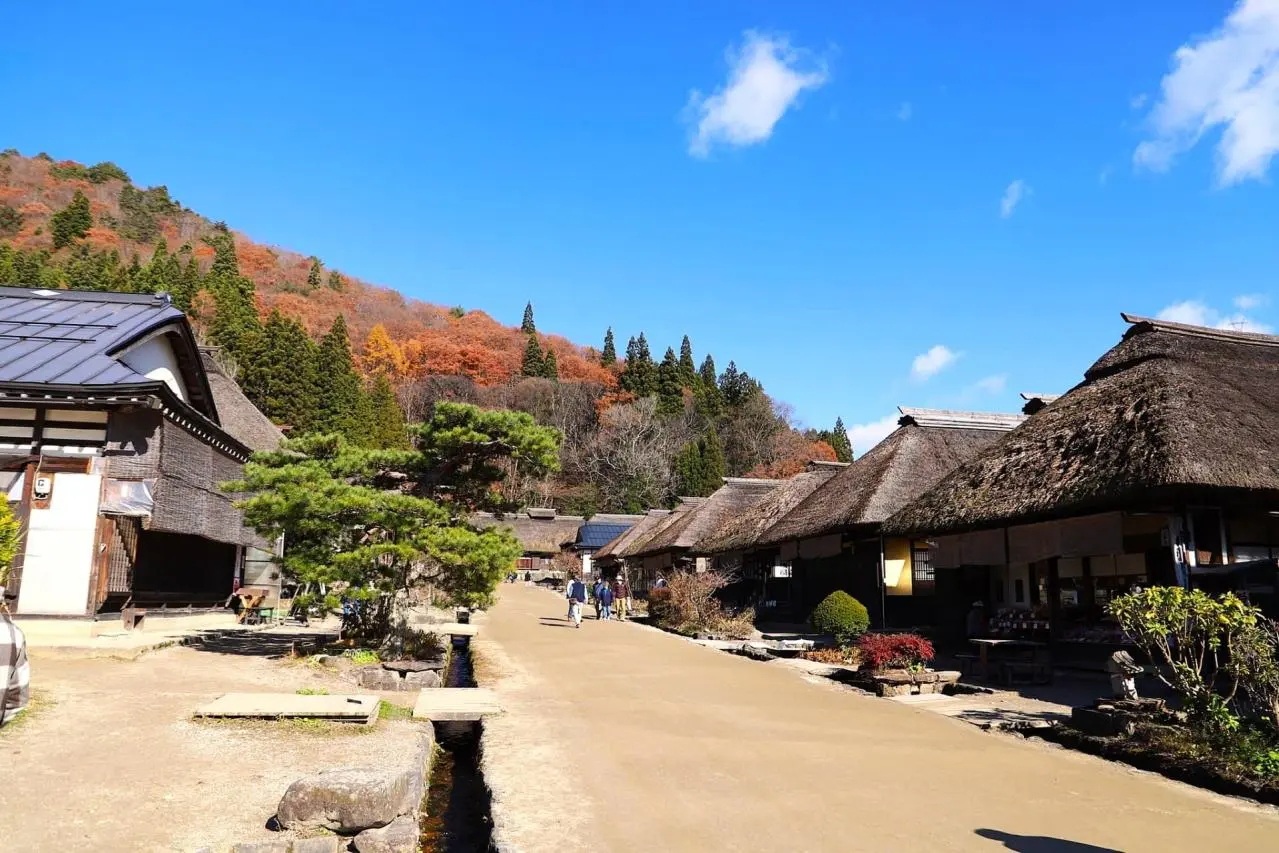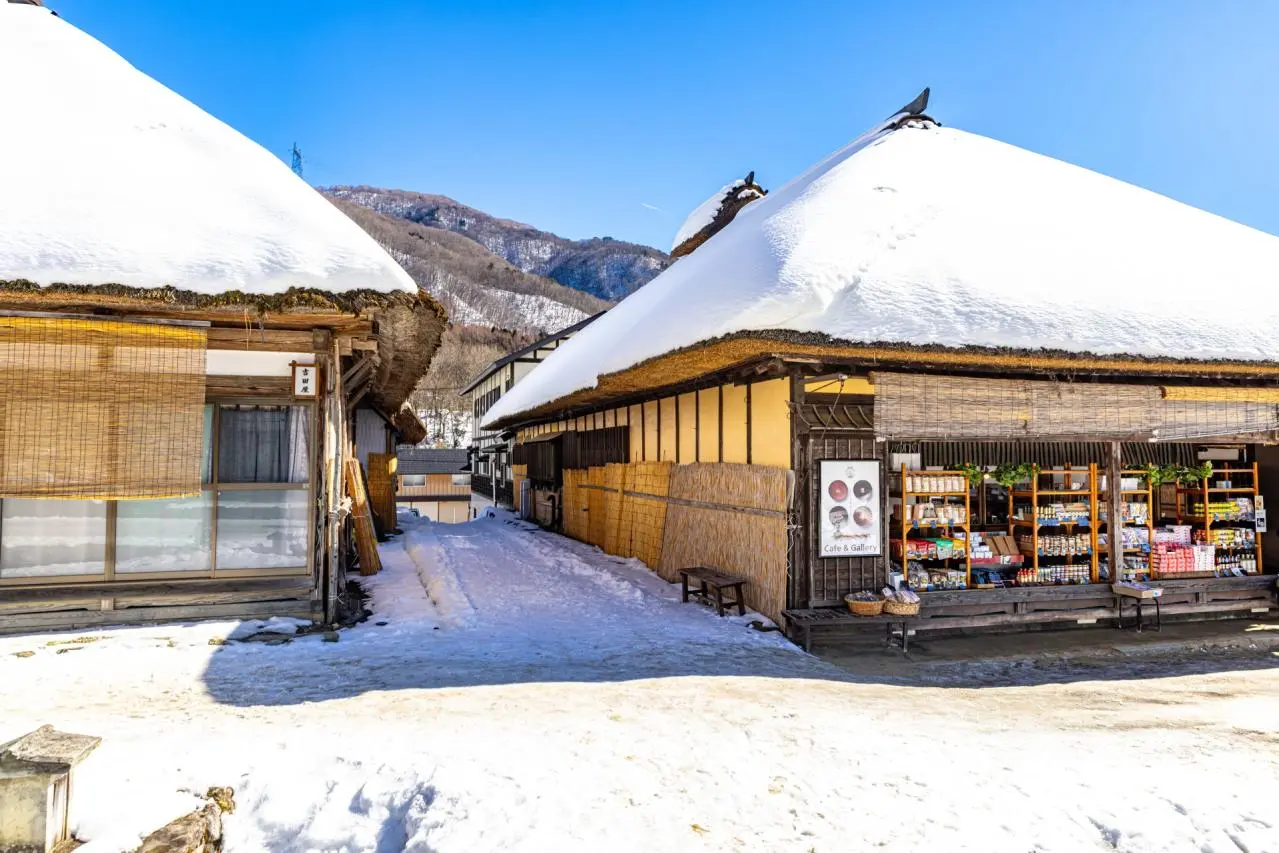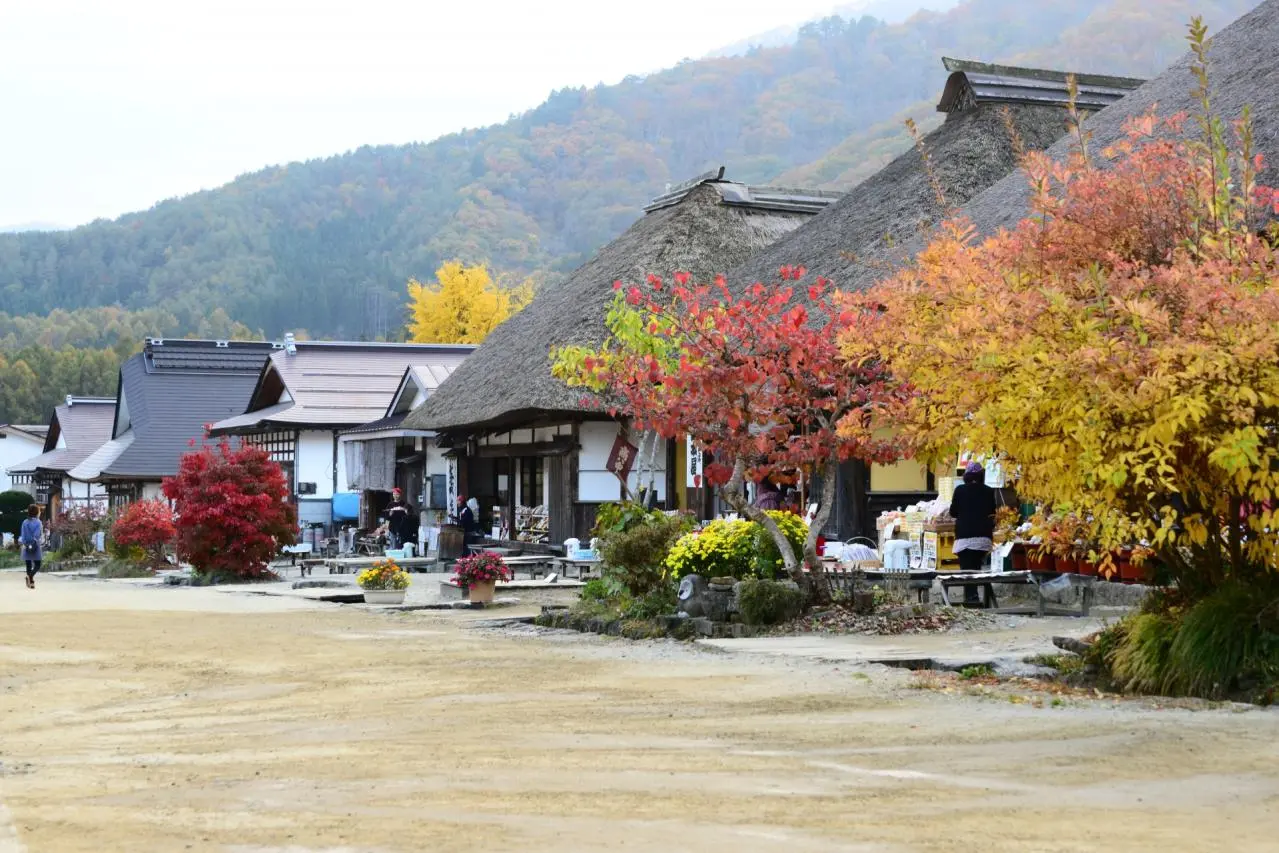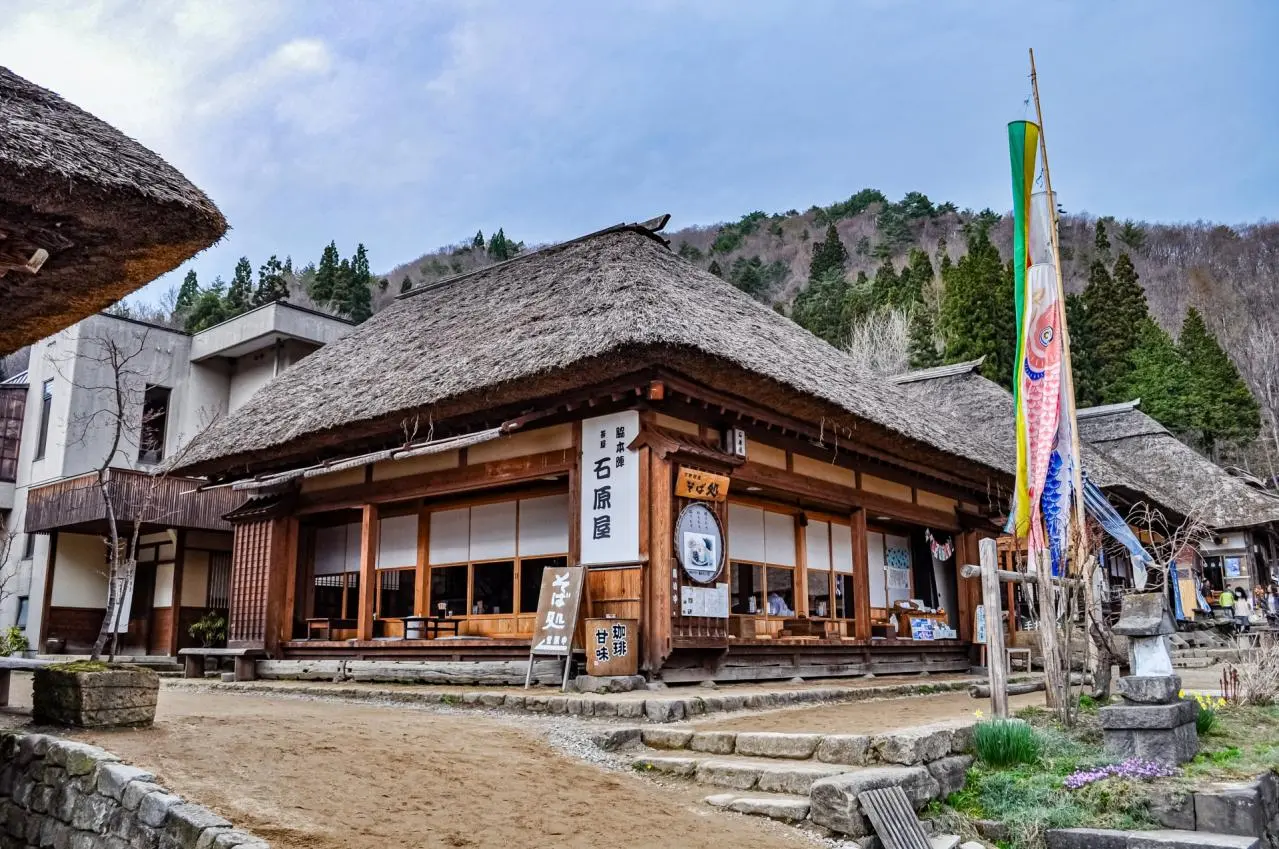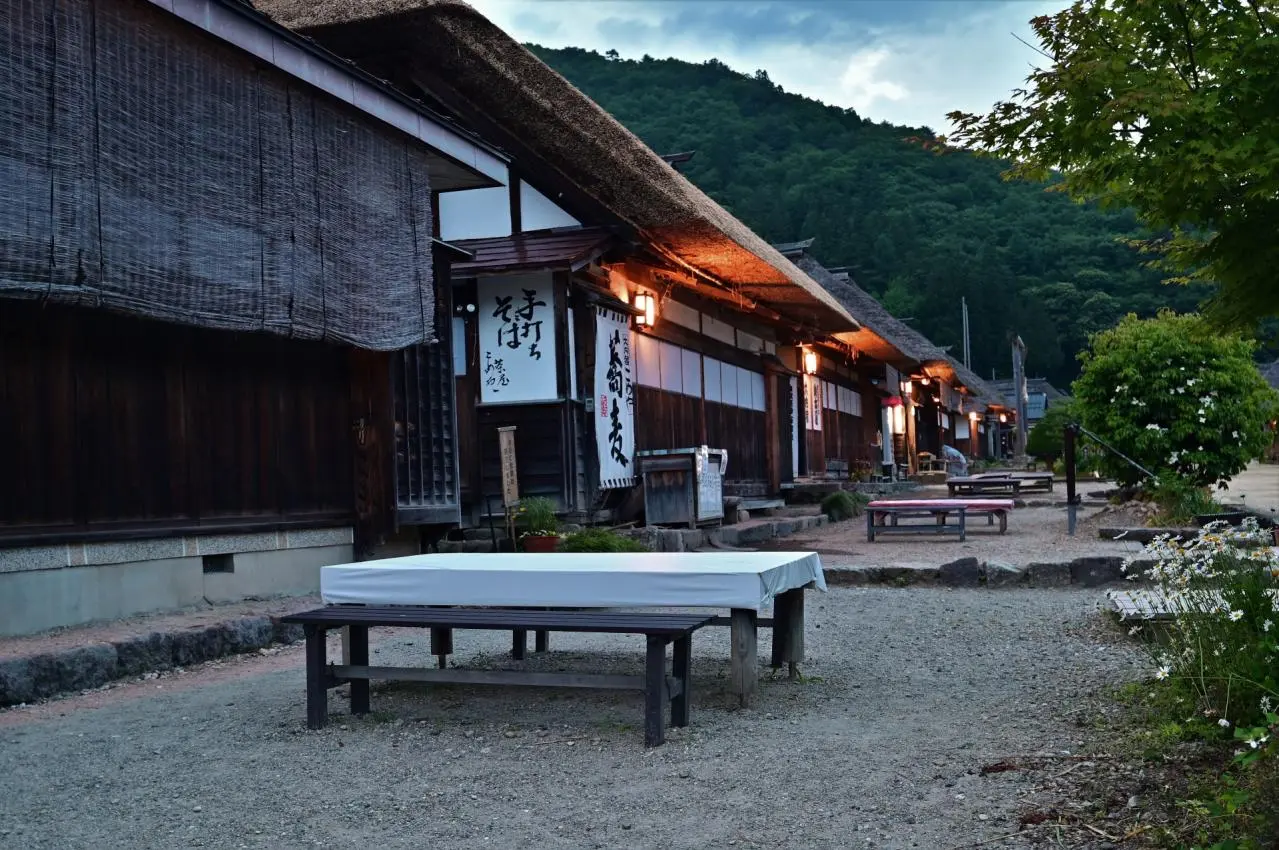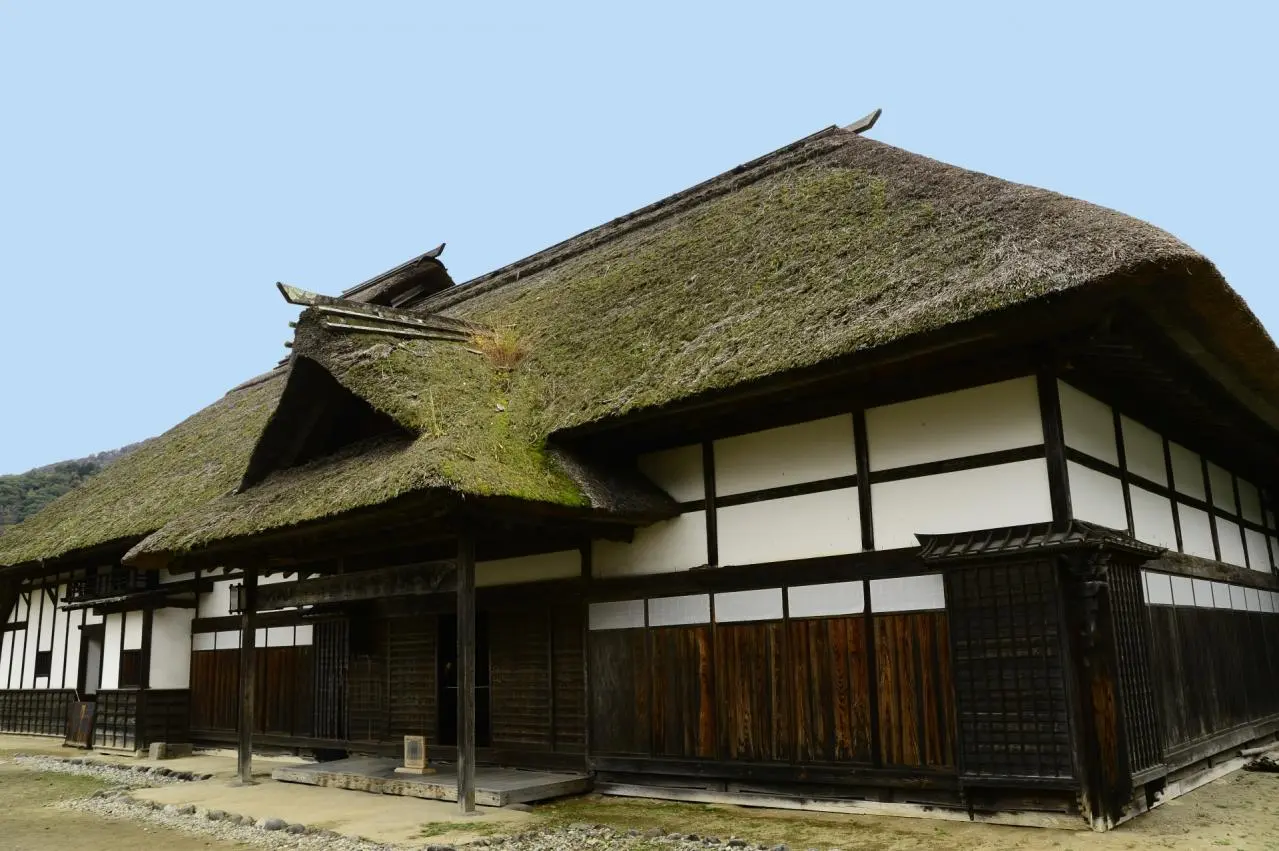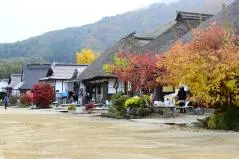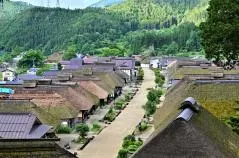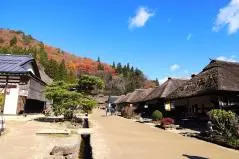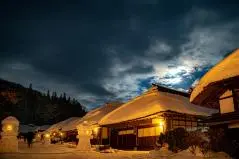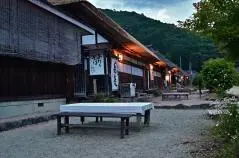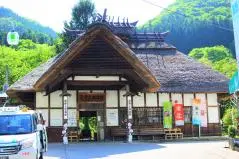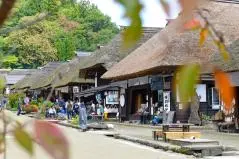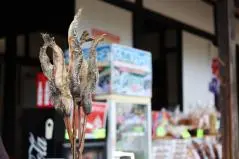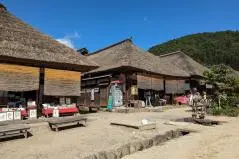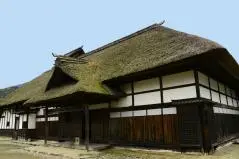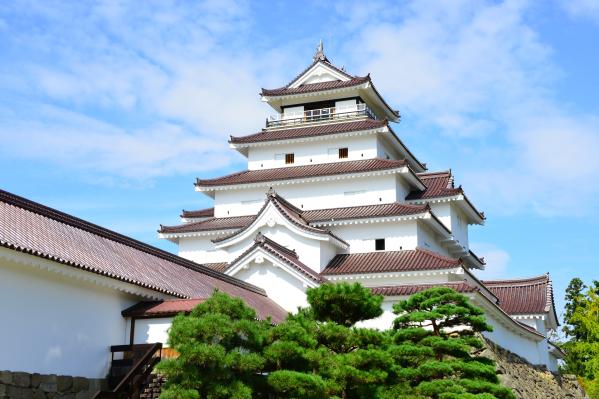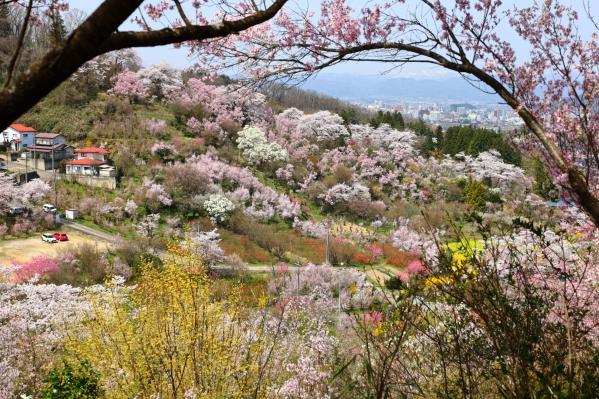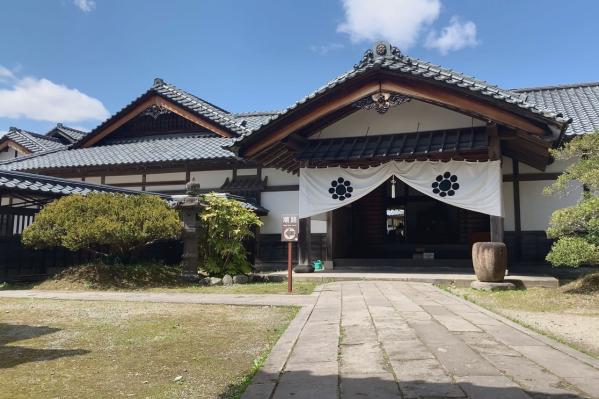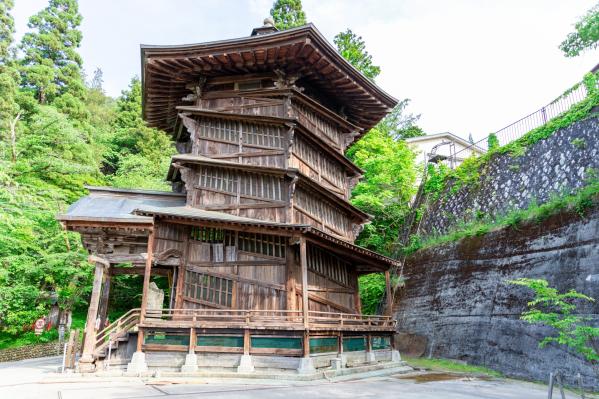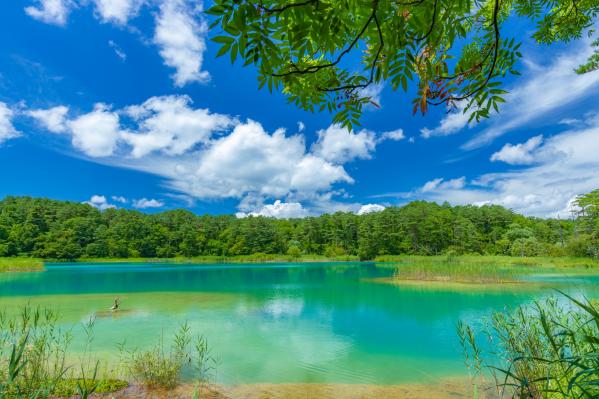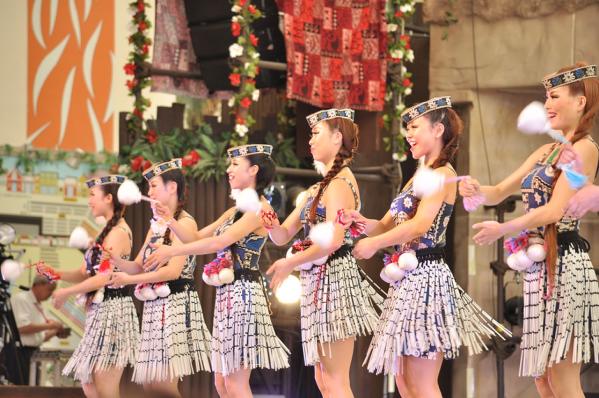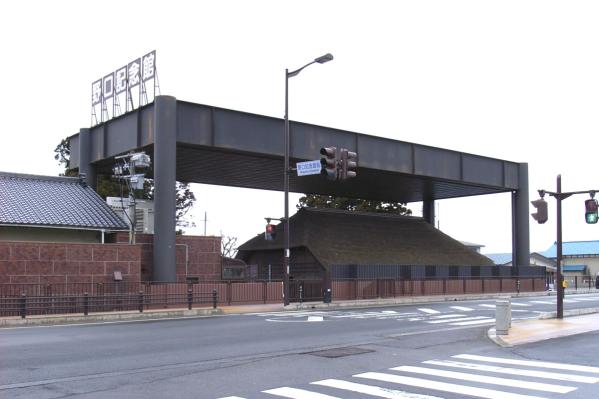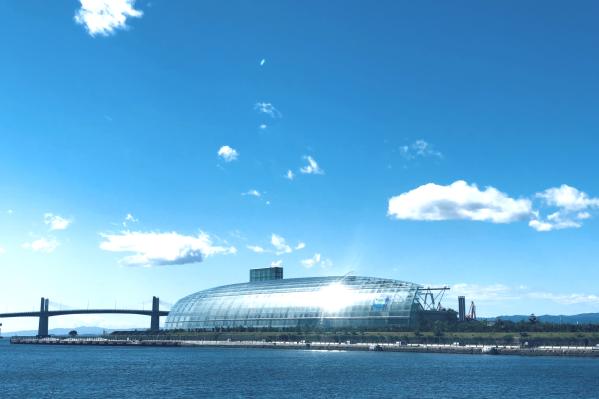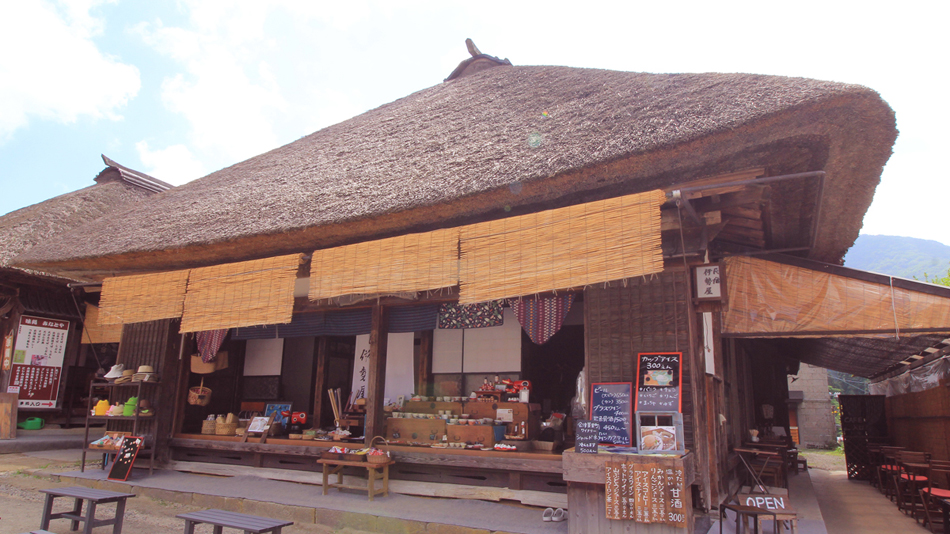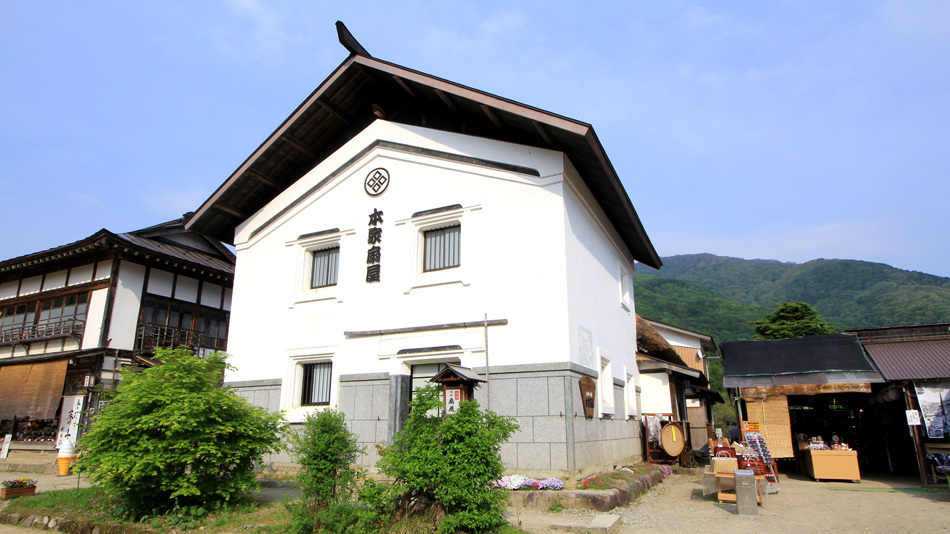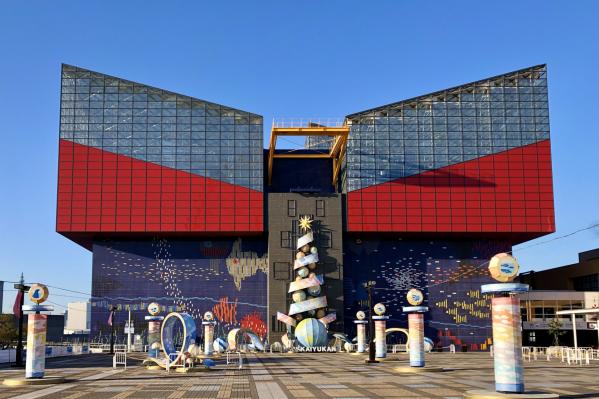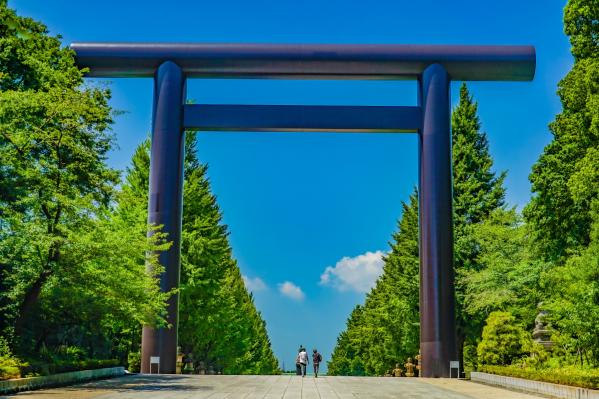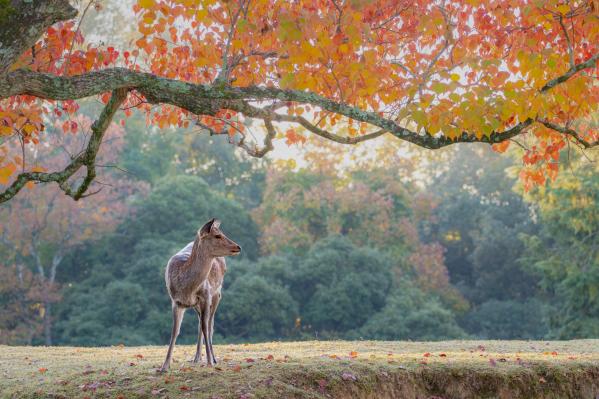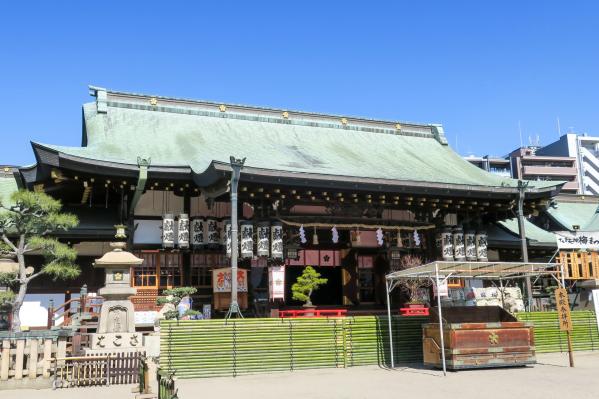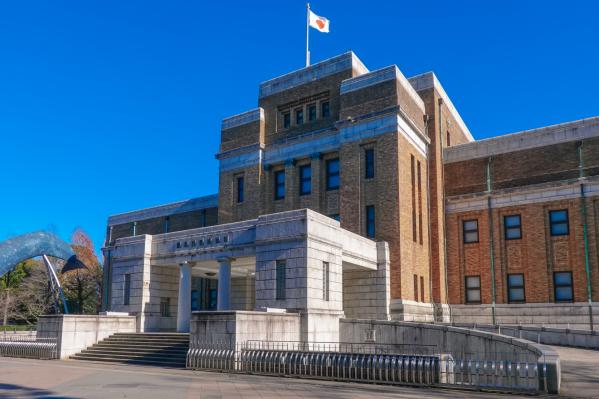Ouchi-juku
In 1981, this area was designated as an "Important Traditional Building Preservation District" by the government, and the residents uphold the three principles of "not selling, not renting, and not destroying" to preserve its beautiful landscape and traditions. During the Edo period, daimyo, merchants, and travelers passed through this area, and notable figures such as Date Masamune and Toyotomi Hideyoshi are recorded to have visited Ouchi-juku.
The importance of the post town diminished with the opening of the railway in the Meiji era, but the subsequent development of transportation networks that bypassed Ouchi-juku helped preserve the old streets. Even today, the scenery and the way of life show vibrancy throughout the four seasons.
In particular, every February, the "Ouchi-juku Snow Festival" is held, and in July, the "Hange Matsuri," which has a history of 800 years, takes place, attracting many visitors. Ouchi-juku is a valuable place where one can experience Japan's history, culture, and beautiful landscapes all at once. Therefore, it can be said that it is an important existence that will continue to convey its value to future generations.
Basic Information
- Spot Name
- Ouchi-juku
- Location
- Ouchi Yamamoto, Shimogo Town, Minamiaizu District, Fukushima Prefecture, Japan
- Access
- 15 minutes by taxi from Yunokami Onsen Station on the Aizu Railway Aizu Line.
- Parking
- Parking available
- Business Hours
- Open for visits自由
- Contact Information
- Phone Number:0241-68-3611
- Official Website
Map
Detailed Information
▶Formation of the Post Town
Ouchi thrived as a post town on the Shimotsuke Highway during the Edo period and has managed to retain its historic charm due to the changes in transportation routes after the Meiji period. This highway had already seen considerable traffic connecting Aizu and the Kanto region since the Kamakura period.
However, it seems that the highway maintenance had not been comprehensive. It was during the Warring States period that efforts to improve roads across various regions began, as part of a national unification initiative. The Tokugawa shogunate continued this work, referring to the main routes of the Five Highways and their associated routes as side roads or alternate routes. The Shimotsuke Highway, being a minor side road, was smaller in scale compared to the main routes, and both the highway and the post stations appeared to be inadequately maintained. Additionally, Ouchi was approximately four and a half ri (about 16.5 km) from Wakamatsu and five ri (20 km) from Tajima; travel in those days was about eight to ten ri per day, making Ouchi-juku a middle-stage stop along the main route, serving as a resting place for lunch.
The formation of Ouchi-juku is thought to have occurred around the same time as Kawashima-juku, which was established in the third year of the Shoo era (1654). The improvements to the highways during the Edo period were related to the consolidation of the Tokugawa shogunate's control, and by this time, both the Five Highways and the side roads were being developed.
▶The Legend of Takakura no Mikoto
In May of the fourth year of the Jishō era (1180), Takakura no Mikoto, the second prince of Emperor Go-Shirakawa who rose in arms alongside Yoshimasa Minamoto to pursue the Heike clan, was defeated at the Battle of Uji River. On his retreat to Nara, he was struck by a stray arrow and died. However, a legend remains in the Ouchi settlement that Takakura no Mikoto safely fled the capital, reached Ouchi, and after staying for several days, set off again toward Echigo Province.
The settlement, known as Yamamoto Village at that time, is said to have been named "Ouchi" after the "Ouchi" palace within the imperial court, and a poem remains: "In spring, flowers bloom; in autumn, the colorful leaves of the Nishikiyama; the eastern capital, the village of Ouchi."
The prince is revered as Takakura Dai Myojin, and on May 18, 1870, it was renamed Takakura Shrine, where he is still worshiped as the guardian deity of the village.
Previously, the festival honoring Takakura no Mikoto was held in May, but due to its overlap with the busy rice planting season, it was moved to "Hange-shō," which is halfway through the year, and has become the current "Hange Festival." In this area, the abundant snowfall results in late rice planting, so communities strive to finish planting before the Hange Festival.
▶Present-Day Ouchi-juku
In 1981, Ouchi-juku was designated as an Important Traditional Buildings Preservation District, becoming one of the leading tourist destinations in the prefecture, attracting over 800,000 visitors annually. Today, the residents of Ouchi-juku uphold a charter with the three principles of "Do not sell, do not lend, do not destroy," continuing their activities to preserve the landscape and traditional thatching techniques for future generations.
#Traditional culture experience #Townscape/Bikan Historical Quarter #Cultural assets/historic sites
Ouchi-juku Movies
Fukushima Tourist Attractions
View ListTsuruga Castle
Tsurgasaki Castle, also known as "Aizu Castle" or "Aizuwakamatsu Castle," is famed for withstanding the fierce assaults of the new government forces during the Boshi...
Hanamiyama Park
Hanamizuki Park is a renowned flower spot in the Wataru area of Fukushima City, praised by the late photographer Shojiro Akiyama as "a paradise of peach blossoms in ...
Aizu Samurai Residence
Aizu Bukeyashiki is a historical theme park centered around the residence of Aizu domain chief retainer, Saigo Yorimoto, which has been relocated and restored. Cover...
Aizu Sazaedo
The Aizu Sazae-do is a three-story wooden hexagonal structure built in 1796 on Mount Iimori in Aizuwakamatsu City, Fukushima Prefecture. Its official name is "Entsu ...
Goshikunuma
The Goshikinuma Pond Group in Urabandai, Fukushima Prefecture, is a mysterious cluster of lakes created by a landslide during the volcanic explosion of Mount Bandai ...
Spa Resort Hawaiians
Spa Resort Hawaiians is one of Japan's premier hot spring leisure facilities, located in Iwaki City, Fukushima Prefecture. Utilizing the abundant hot spring water fr...
Hideyo Noguchi Memorial Museum
The Noguchi Hideyo Memorial Museum is a facility that introduces the life and achievements of the bacteriologist Hideyo Noguchi, known for his portrait on the 1,000 ...
Aqua Marine Fukushima
Aqua Marine Fukushima is an aquarium themed around the "confluence of currents," where the cold and warm ocean currents meet. Inside the facility, you can experience...

